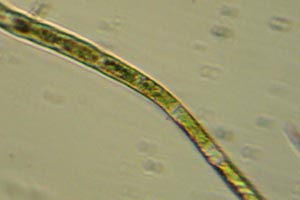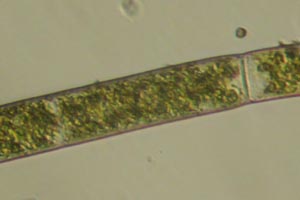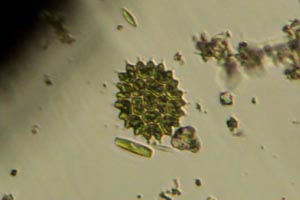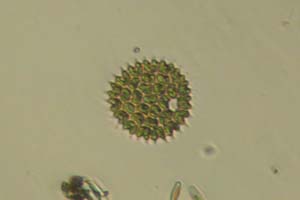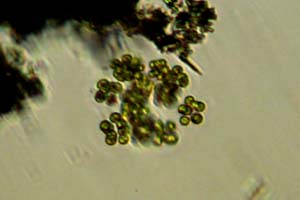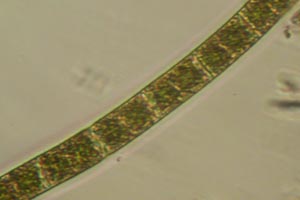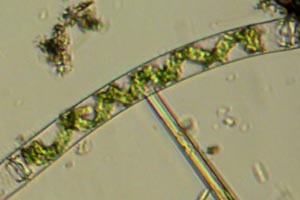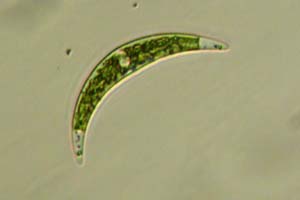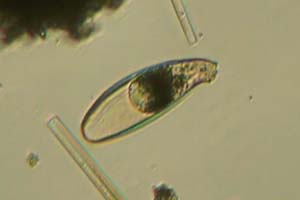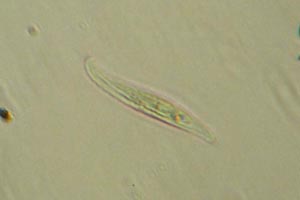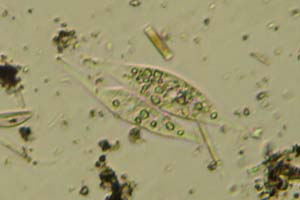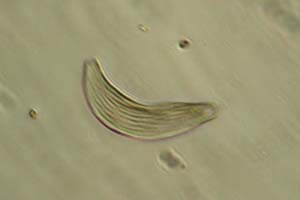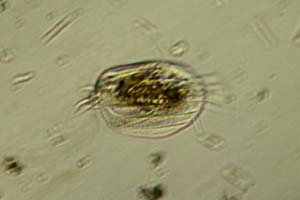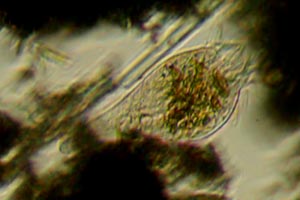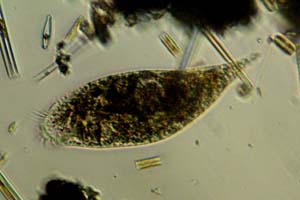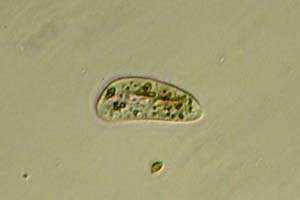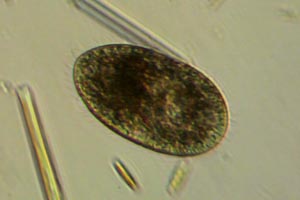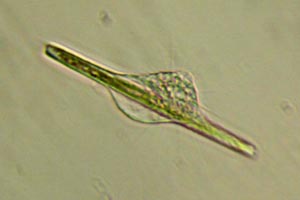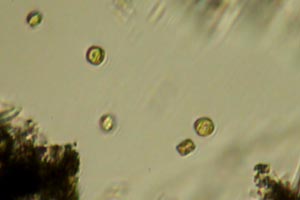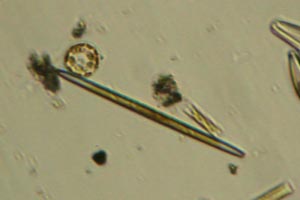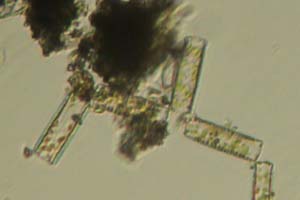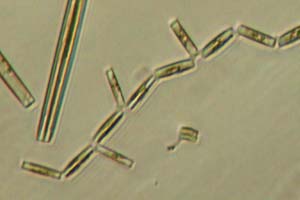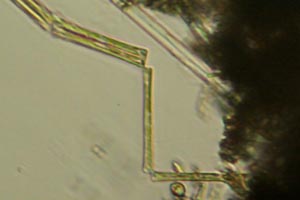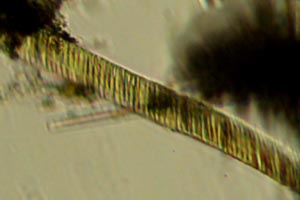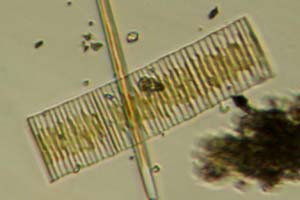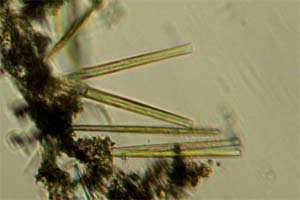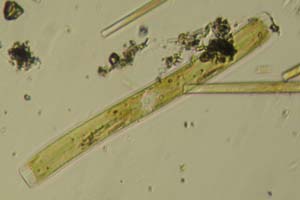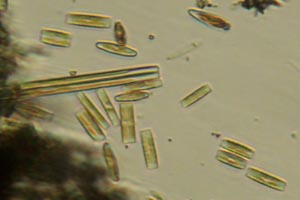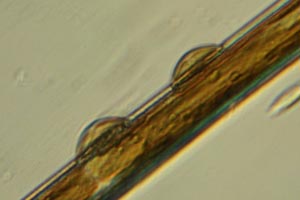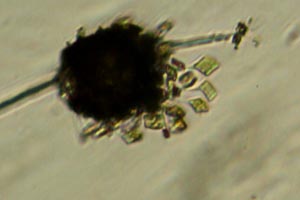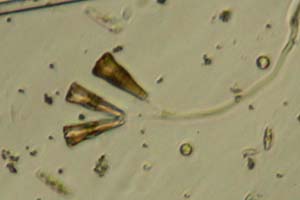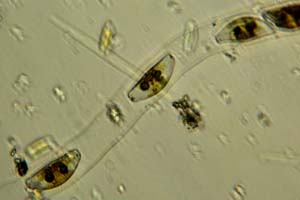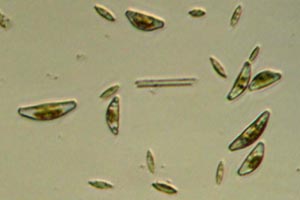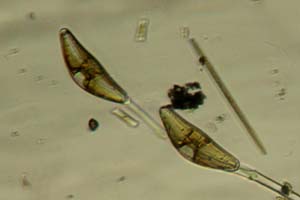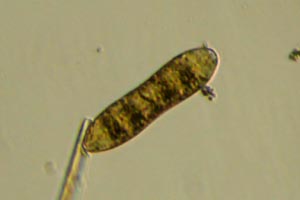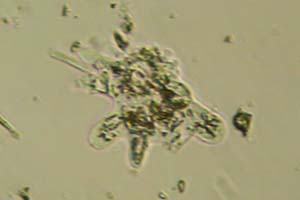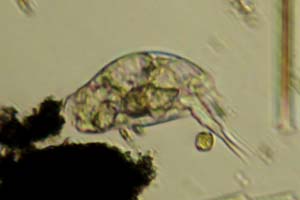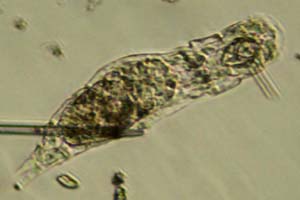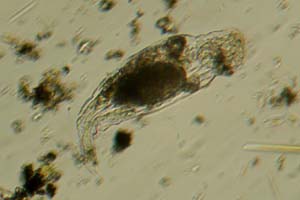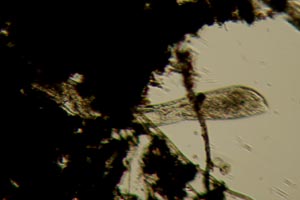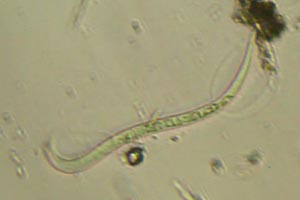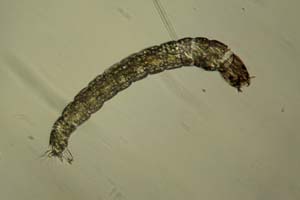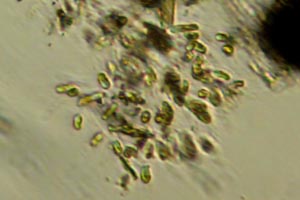Jan 9-10, 2010
This was during a long Chinook, where west winds raised daytime temperatures to about 10 ºC. Fish Creek was covered by snow and thick ice, but near the middle of the stream there was a small hole, about one metre across and only partly frozen over. Some of the water, which was fast but very shallow, was taken along with a rock. To keep it cold, the container was kept in snow and refrigerated overnight.
There was some brownish material on the rock, and more settled out on the bottom. This was dominated by large numbers of diatoms. The most common were attached and free Cymbella, Encyonema, and especially needle-like araphids, often with smaller Cocconeis upon them. There were also several other colonial types and centric diatoms.
Along with these, there were several Actinophrys found in nearly every drop, with some feeding on the diatoms. Green algae were also fairly common, including Pseudopediastrum, a few different sorts of filaments, and some Closterium. On the second day small flagellates were becoming increasingly frequent as well.
Here and there were also small to large litostomes and other ciliates, including a few found near the surface of the water, where there was little else. Midge larvae were the most common animals but there were also various kinds of ploimid rotifer. Finally, there were two amoebae in debris from the bottom, one Cyphoderia and one Polychaos.
↬ Thanks to ciliatologist Dr. Peter Vďačný for the identification of what is likely Chaenea, to Michael Plewka for the identification of Dicranophoridae (maybe Encentrum), and to Bruce Taylor for confirming the identification of Amphileptus.
